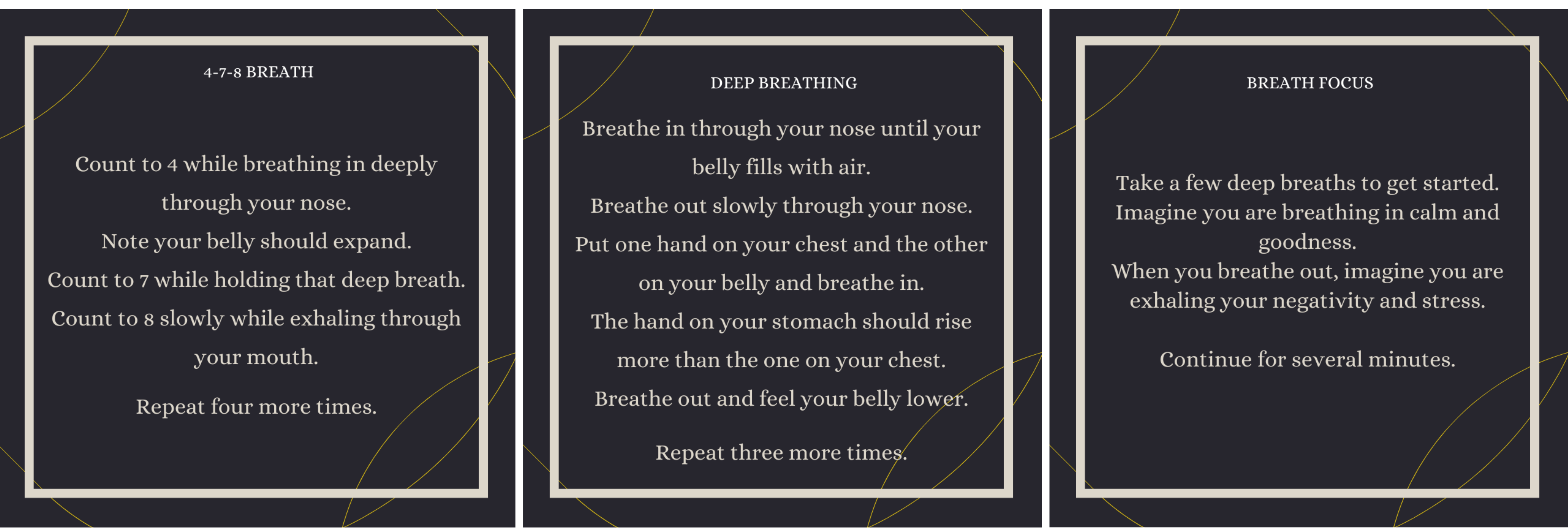Take a Breath

Go on, I mean it. Take a breath with me now. A big chest opening deep breath. Feel good? Thought so…
The nature of this text alone probably reached you through an email, the ritualistic morning check of your inbox. Perhaps you even just got back from holiday and have been swamped with a never ending parade of virtual envelopes waiting to be clicked open.
We are surrounded by unconscious actions, the most important of these is of course breathing. We take it for granted for the most part, to the point where a lot of us probably haven’t even thought about it for a while…
The only time I take conscious breath is when I see the sea, or a beautiful view. Naturally, times of awe cause us to become conscious of our breath. We feel our lungs expanding, filling with air becoming one with the nature around us. No distractions, just bliss. Interoception is the internal sensory system in which both physical and emotional states are consciously or unconsciously noticed and responded to. Obvious examples of these are sight, touch and smell. Breathing opens up a unique insight into our interoceptive processes as we are able to swap between subconscious and conscious control.
Take a breath and meet your vagus nerve
The Vagus nerve is the longest cranial nerve in the body. A healthy vagus nerve is integral to forming mindful responses to our surroundings and emotions. It is how you develop healthy stress responses and when you are in tune with this nerve, it can help counteract your fight/flight system. By incorporating breathing exercises into your daily life, you will become attuned to your vagus nerve. In turn, you can become calmer, compassionate and have a greater connection to your inner self.
Think of how much time in a day we spend in short, shallow breath. These are arguably the times we need to breathe mindfully. However you stimulate your vagus nerve, you are connecting with yourself and tapping into mindfulness.
“Whenever we turn inward to check in with our true feelings; to check in with our intuitive wisdom; or to find our true expressiveness, we’re lighting up the vagus nerve.” Dr Glenn Doyle
It’s as easy as breathing
Our initial response to anxiety and stress is often channeled through deep considered thinking. We play out worst-case scenarios in our minds and drown in negativity. It can also manifest physically through a tight chest and sweaty palms. Breathing offers a different approach to responding to stress or anxiety as it targets the body directly. By breathing deep and slow we can calm our minds and sometimes even gain immediate relief.
“the vagal tone is correlated with capacity to regulate stress responses and can be influenced by breathing; its increase through meditation and yoga likely contribute to resilience and the mitigation of mood and anxiety symptoms.” –Frontiers
The vagus nerve is in direct correlation with our capacity to regulate stress responses. This response can be managed through conscious breathing. By stimulating the vagus nerve, your body is calmed and can even activate oxytocin release, this in turn can generate feelings of connection and stress relief.
“If we’re breathing really shallowly and fast, it causes our nervous system to up-regulate and we feel tense and anxious. If we’re breathing slowly, it actually turns on the anti-stress response.”–Elissa Epel
Humans are complicated, we are often drowned by our own thoughts, feelings and traumas. Becoming attuned to your vagus nerve unfortunately won’t fix everything. But, it may become a helpful friend. There are not many functions that we can choose to control, but we can control how and when we breathe. Next time you feel overwhelmed, overworked or stressed, try out some basic breathing exercises to bring you back to yourself and look after that vagus nerve.
“In the same way that mindfulness practice isn’t just meditation, breathing as a practice isn’t just waking up every morning and doing 10 minutes of box breathing. It’s also important to be aware of the way you breathe in everyday life (or while you’re checking your email).”–Kira NewmanAT
Breathing exercises
Take the time now to try out some of these short desk friendly exercises, notice how your breath, body and mind feel. I think it is also important to not overcomplicate the action of conscious breath. Sometimes it is just as powerful to check in with your breath periodically through the day. As always, we would love to hear your thoughts on this, perhaps you already have some favourite breathing exercises you can share with us.
Share your thoughts and keep in touch by signing up to our newsletter below! You can find our previous blog posts by clicking here.
Thanks for reading,
Alice.


